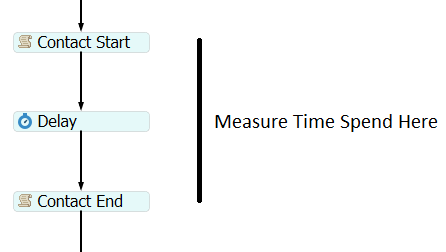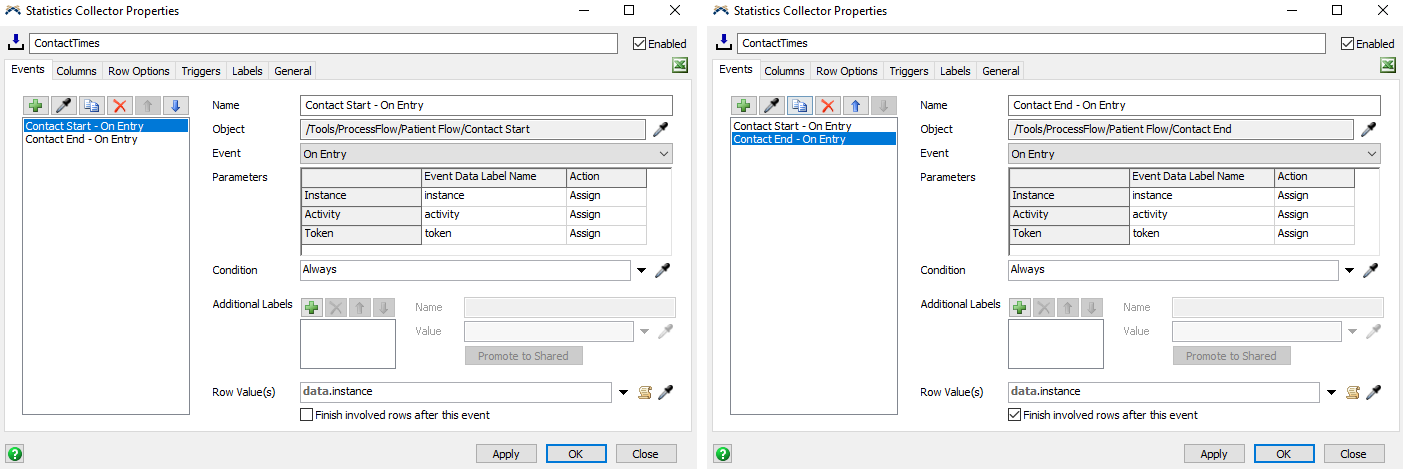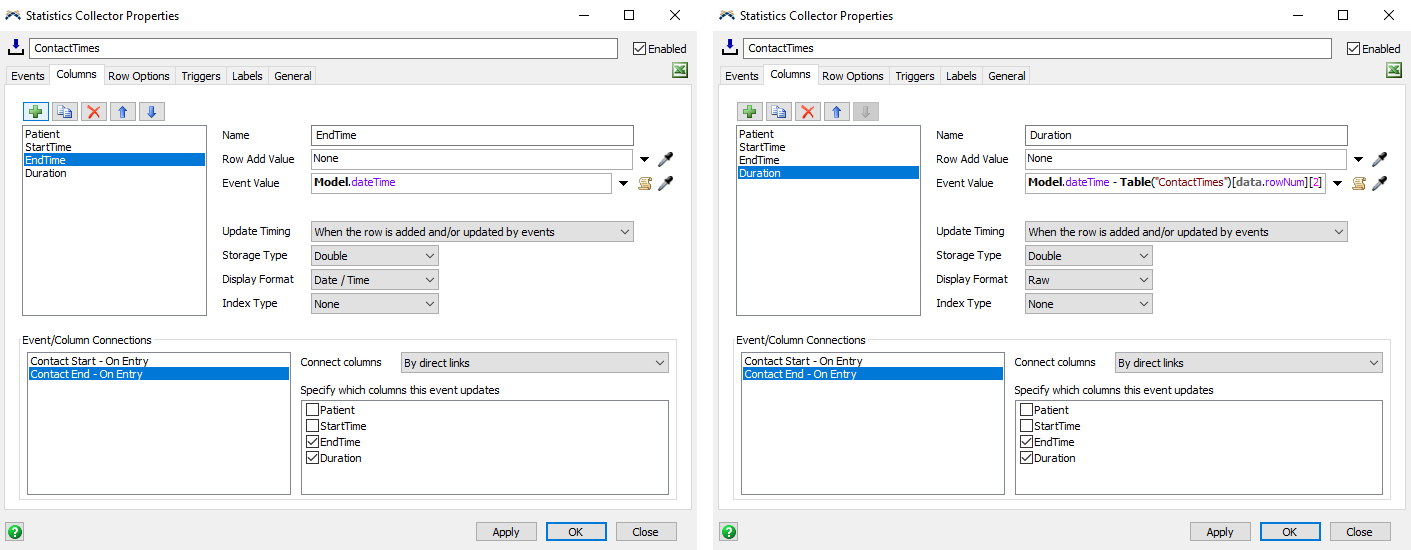Hello! I need to determine the number and duration of contacts of the patient with the doctor within a certain time. I think that a statistics collector is suitable for this, because there you can determine the start and end times of the contact, but my problem is that I do not have enough knowledge to do this.
question
1 Answer
Your goal seems to be to essentially measure the time a token spends in a certain section of the patient flow.
To do this you add two events to a Statistics Collector. One event for the entry into the "start" activity and one for the entry into the "end" activity.
With the default settings, each event would create a new row in the internal table of the statistics collector. The end event should update the row that was created by start event, though. To do this, we use the 'Row Value'. This is an identifier for each row of the table. If a row value already exists, the corresponding row will be updated instead of creating a new one. For the row value we use "data.instance". "Instance" is one of the parameters of the OnEntry event and refers to the patient in this case (the instance object of the patient flow).
After the end event, the row is complete and the next time the patient has contact, a new row should be created again. As such, the "Finish involved rows after this event" option is checked for the end event.
On the columns tab, the data that should be stored in the collector's table is defined.
There are two ways that a value can be written to the table. The "Row Add Value" will be stored in the table when the row is created. The "Event Value" will overwrite the previous value when the row is updated. Which event updates what row(s) is chosen in the bottom half of the window.
In this case the patient name and start time are both known when the row is created by the start event and they both don't change. As such, they are assigned as the "Row Add Value". The end time and duration are only known once the end event fires, which is set to update the row. So those two values are assigned as "Event Values".
This results in the following (example) table.
You could now use a Calculated Table that uses the collector's table as data source to derive further statistical data (how often did a patient have contact, min/max/avg durations).
question details
14 People are following this question.





